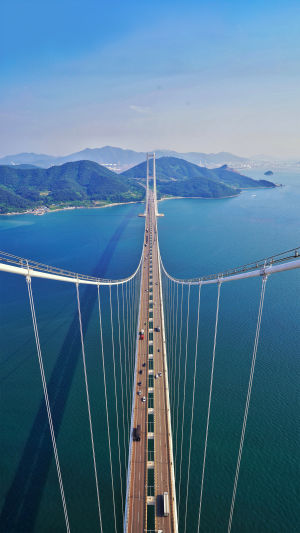Drawbridges have long captured our imagination, evoking images of medieval castles, knights, and epic battles. These architectural wonders have surpassed their historical context to become crucial structures that facilitate the seamless connection between land and water.
In this article, we delve into the fascinating world of drawbridges, exploring their history, designs, and significance in modern times. The concept of the drawbridge dates back centuries.
In medieval times, castles employed drawbridges as a defensive mechanism, preventing unauthorized access and thwarting potential invaders.
These early drawbridges consisted of wooden planks or chains, often raised through ropes and pulleys.
Over time, engineering advancements led to the development of more complex systems that could accommodate heavier loads and resist siege equipment.
Drawbridges typically comprise two key elements: a movable section, known as the "leaf" or "span," and a support structure, which may be a tower or pier.
The leaf is attached to a hinge mechanism that allows it to rotate vertically or horizontally, facilitating the passage of boats or ships underneath.
Counterweights or hydraulic systems help in raising or lowering the leaf efficiently.
Different designs of drawbridges have been created to fulfill specific geographical and functional requirements. In urban areas, you will often find bascule drawbridges, which have a leaf that pivots upward like a seesaw. This design lowers the amount of energy required to lift the bridge and allows for fast movement. On the other hand, vertical-lift drawbridges lift their leaf vertically, using counterweights or hydraulic systems. These bridges are perfect for locations with limited clearance or heavy traffic.
Although drawbridges may evoke a sense of nostalgia, they remain highly relevant in the modern era.
In areas where waterways intersect with roads, drawbridges are necessary to maintain connectivity between communities and ensure seamless transportation.
They allow boats and ships to navigate through busy water channels while permitting land-based traffic to continue uninterrupted.
Drawbridges also serve as iconic landmarks, adding aesthetic value to their surroundings.
Many cities have preserved historic drawbridges as cultural symbols, attracting tourists and celebrating their architectural heritage.
Additionally, drawbridges have become popular subjects in art, literature, and cinema, further cementing their place in popular culture.
As urbanization and water traffic increase, the demand for efficient drawbridge designs will continue to grow.
Engineers are exploring innovative technologies such as sensor systems, automation, and lightweight materials to enhance the functionality and safety of drawbridges.
Moreover, efforts are being made to improve the energy efficiency of drawbridge operations and reduce their environmental impact.
However, constructing and maintaining drawbridges pose challenges. Ensuring the structural integrity of these movable structures, mitigating corrosion, and managing the complex mechanical systems require ongoing maintenance and investment.
Balancing the preservation of historic drawbridges with the need for modern infrastructure remains a delicate task.
Drawbridges represent a remarkable fusion of history, engineering, and aesthetics.
Since their medieval beginnings, drawbridges have played a crucial role in connecting land and water. Today, they remain as important as ever, and their evolution will undoubtedly contribute to the development of sustainable and interconnected communities in the future.





